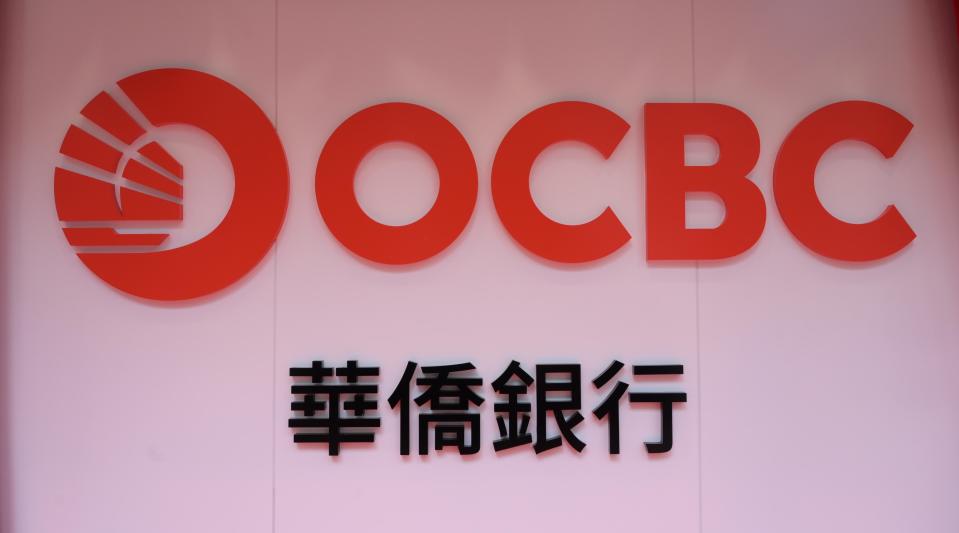RHB downgrades OCBC to 'neutral' with lower NIM, net profit forecast

RHB’s analysts demurred from peers like Citi Research and DBS Group Research, who have kept their outlook on OCBC.
RHB Bank Singapore analysts have downgraded Oversea-Chinese Banking Corporation (OCBC) to “neutral” from “buy”, expecting “near-term headwinds” like subdued loan growth and softening fee income ahead of the bank’s results for 2QFY2023 ended June, to be released on Aug 4.
Along with the rating downgrade, RHB has trimmed its target price to $13.20 from $14, which represents a 7% upside. RHB’s target price includes a 2% environmental, social and governance (ESG) premium, based on the research house’s proprietary methodology.
With the July 5 report, RHB’s analysts demurred from peers like Citi Research and DBS Group Research, who have kept their outlook on OCBC O39 following the bank’s brand and strategy refresh, unveiled on July 3. That said, RHB’s target price is higher than Citi’s $12.50 and DBS’s $13.
OCBC’s announcement includes a target to deliver an incremental $3 billion in cumulative revenue between 2023 and 2025, and a decision to invest more than $50 million over the next three years to build up transaction banking capabilities in Greater China.
Ahead of the results release, OCBC is currently in its blackout period. Hence, leaders like group chief executive officer Helen Wong were unable to provide analysts with more details on its new targets at a July 3 briefing in Hong Kong.
“While details were scant, we believe it is well-positioned to capitalise on the growing Asean-Greater China business flows over the medium-to-long term. In the near term, however, China’s macroeconomic softness and net interest margin (NIM) headwinds will likely cap its share price performance,” write RHB’s analysts.
More of the same in 2QFY2023
RHB expects much of the trends in 1QFY2023 to continue in 2QFY2023.
OCBC’s loan growth will remain subdued, says RHB, chiefly hampered by weaker trade-related financing, given the weakness in China’s macroeconomic data.
Also, OCBC has seen a preference by corporates to turn to the onshore market, given the cheaper financing rates there, and believes the China reopening will need time to recover.
On the other hand, certain non-trade loans, as well as the drawdown in the mortgage pipeline, have been decent, write the RHB analysts.
Meanwhile, OCBC sees continued build-up in liquidity due to strong inflows. “Recall that 1QFY2023 loan growth was flat sequentially while customer deposits rose 5% q-o-q, driven by fixed deposits and new money inflows. We gather that new money inflows remain strong but the shift in the deposit mix from current accounts and savings accounts (CASA) to fixed deposits has decelerated, as banks eased up on the rate competition.”
OCBC’s guidance on NIMs suggest a sequential easing, add the analysts. “Its FY2023 NIM guidance of 2.2% (compared to 1QFY2023’s 2.3%, suggests that NIMs will ease in the coming quarters. This would be due to factors such as the ongoing repricing of deposits, CASA mix shift, liquidity drag from healthy new money inflows and a generally cautious investor sentiment, which results in money inflows sitting in deposits rather than being redeployed into wealth management products.”
This guidance has assumed no further rate hikes nor any rate cuts this year.
Softness will prevail in OCBC’s fee income, says RHB. 1QFY2023 fee income was down 13% y-o-y, mainly on lower wealth management income.
“Given the cautious investor sentiment mentioned above, we expect wealth management fees to remain soft. Wealth management income accounted for 42% of net fee income in 1QFY2023. Meanwhile, trade- and loan-related fees will reflect continued softness in loan growth,” note the RHB analysts.
OCBC’s operating expenses (opex) could see some seasonal pickup from salary adjustments, says RHB. However, OCBC will continue to manage this y-o-y to achieve positive operating JAWS, they add. “Other cost areas, however, remain well-behaved.”
Finally, OCBC’s asset quality is holding up and so far, seems quite benign, write the RHB analysts. “OCBC continues to monitor all sectors and, so far, there have been no red flags from the ongoing review.”
RHB has left its FY2023 forecasts for OCBC “relatively unchanged” but trim FY2024-2025 net profit by 6%-8%, due to the downward revisions in NIM assumptions.
“We see downside risks to our earlier expectations that NIM would be stable in FY2023-2025. The US federal funds rate (FFR) is projected to rise to 5.50%-5.75% by end-2023 as the US Federal Reserve is determined to bring inflation down to 2%. Still, the FFR is widely expected to ease to 4.6% in 2024 and 3.4% in 2025. The rate cuts would result in NIM compression for banks, including OCBC,” they add.
As at 11.53am, shares in OCBC are trading 12 cents lower, or 0.97% down, at $12.23.
See Also:
Click here to stay updated with the Latest Business & Investment News in Singapore
ComfortDelGro's expansion into China sees RHB raise TP to $1.35
Get in-depth insights from our expert contributors, and dive into financial and economic trends

 Yahoo Finance
Yahoo Finance 